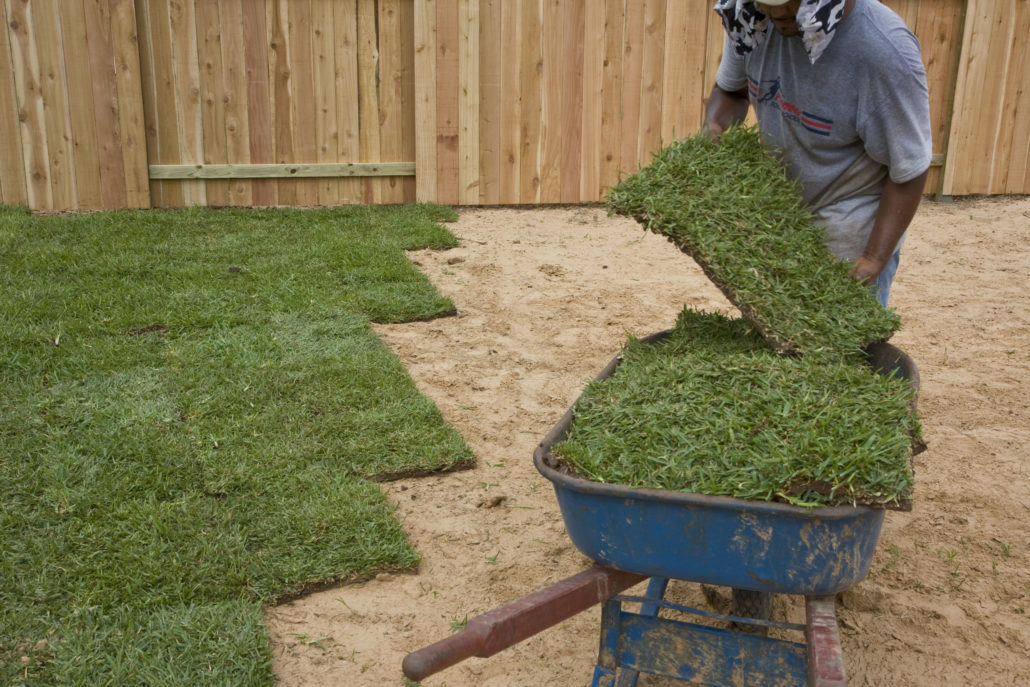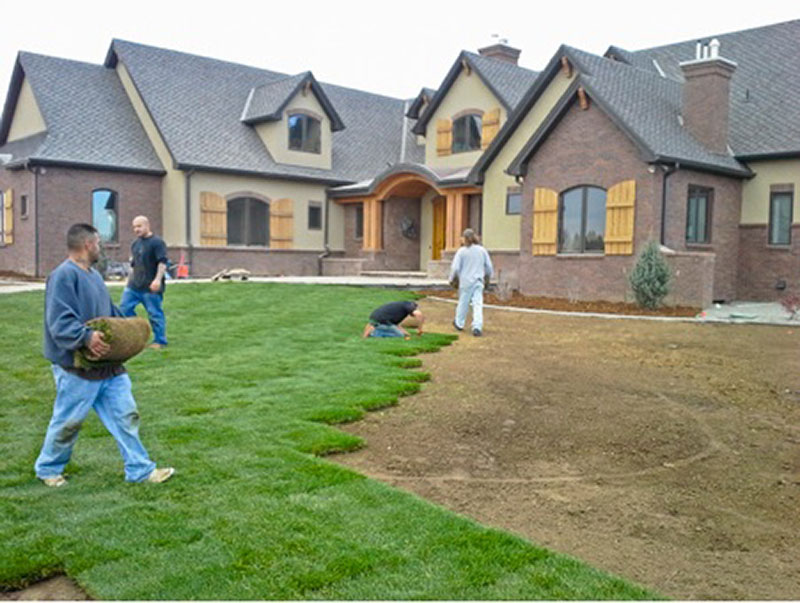Installation and Care
We’ve compiled a few hints and tips to help you get the most value out of your new grass investment. Follow these simple guidelines to help make sure your grass comes in lush and full.
Prepare the soil
Proper soil improvement and site preparation before planting takes place will make it easier for the grass roots to penetrate deeply and evenly. Deep roots will make the lawn more drought resistant, use water and nutrients more efficiently and result in a denser and healthier lawn as new grass plant shoots emerge. A dense lawn crowds out weeds and offers greater resistance to insects and disease.
What is the best soil for turfgrass?
Loams, sandy loams and loamy sands, with a pH of 6.0 to 7.0 are the very best soils for producing a beautiful, high-use, low maintenance lawn. Unfortunately, this ideal soil mixture is seldom found on any property after construction.
How deep should the soil be?
The absolute minimum depth of quality top soil for a care-free lawn is 4 inches; however, for deeper root penetration and the benefits that they bring, the accepted standard is 6 inches.
Prepare the site
- Clear the site of all building materials (wood, cement, bricks, etc.) as well as any buried stumps, rocks, stones or other debris that are any larger than 2 inches in diameter.
- Rough grade the entire area to eliminate any drainage problems on the property. This would include sloping the grade away from building foundations, eliminating or reducing severe slopes and filling low-lying areas. A tractor mounted blade and/or box are most often used for rough grading, but if the area is small, it can be done with hand tools.
- Initial tilling to a depth of at least 2 inches should be completed prior to adding any topsoil or soil amendments This will control most annual weeds, alleviate subsoil compaction, permit a bonding of the topsoil to the subsoil and improve root penetration, air exchange and water movement.
- Add topsoil to achieve a total topsoil depth of 4-6 inches after firming.
- Test soil for pH and nutrients to determine if any pH correcting materials or nutrients are required.
For acidic soils, those with a pH of less than 6, add lime to improve the soil. For alkaline soils, those with a pH of 8 and higher, add sulpher. The type and amount of materials needed will be determined by the level of acidity/alkalinity and should be based on a professional’s recommendation. - Apply fertilizer to correct any deficiencies following the product’s recommended rate. To avoid root injury to new turfgrass, the fertilizer should be raked into the top 3-4 inches of soil.
- Finish grade the entire site.
- Roll the area with a lawn roller one-third full of water to firm and settle the surface. Low spots should be filled to match the surrounding grade surface. If time permits, allow area to settle further with rainfall or by applying irrigation.
Measuring & Ordering
Use a tape measure to determine the area of your planned lawn. Measure the area’s shape minus any landscaping features (trees, flowerbeds, patios, sidewalks, etc.) to get the total square footage. Divide by 450 sq.ft., the size of one pallet, to determine how many pallets you will need. Call us at 281-375-7505 if you need help.
Schedule your turfgrass delivery after you have completed your soil and site prep and are ready to install the turfgrass. Prompt installation on the day of delivery is crucial.
Turfgrass Installation
Prior to installing your turfgrass sod, moisten the soil and install your lawn immediately upon delivery. In hot weather, protect unlaid turf by placing the blocks in the shade. If possible, cover with a moist cloth, or lightly water the unprotected turf.
Begin installing turf along the longest straight line, such as a driveway, sidewalk or patio. Butt edges and ends against each other tightly, without stretching. Avoid gaps or overlaps. Stagger blocks in each row in a brick-like fashion, using a large sharp knife to trim corners, edges, etc. Avoid leasing small strips at outer edges as they will not retain moisture. On slopes, place the turf blocks so they run across the slope rather than up and down the slope.
To prevent indentations or air pockets avoid repeated walking or kneeling on the turf while it is being installed or just after watering.
After installing the turfgrass, roll the entire area to improve turfgrass/soil contact and remove air pockets.
Watering
Give your new lawn at least 1 inch of water within a half hour of installation. Water daily or more often, keeping turf moist until it is firmly rooted (about 2 weeks). Then less frequent and deeper watering should begin.
Weather conditions will dictate the amount and frequency of watering. Be certain that your new lawn has enough moisture to survive hot, dry, or windy periods. Water areas near buildings more often where reflected heat dries turfgrass.
Caution
During the first few weeks, avoid heavy or concentrated use of your new lawn. This gives the roots an opportunity to grow into the soil and ensures the turf will remain smooth.









